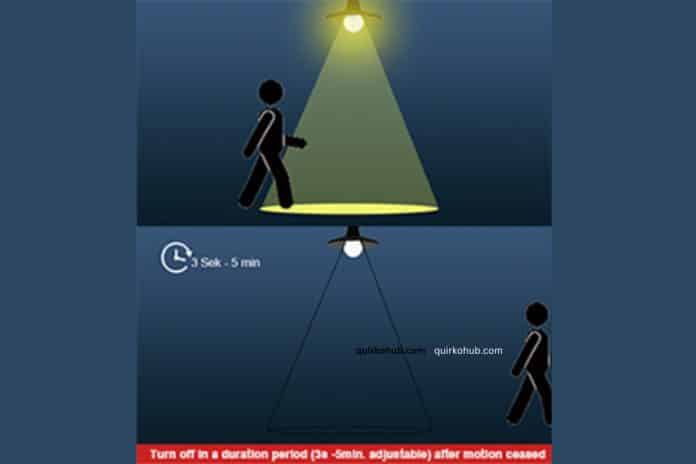When you walk into a dark hallway, and suddenly the lights turn on by themselves, it feels almost magical, right? That’s the power of motion sensor light bulbs. These smart lighting options are becoming popular in homes, offices, and even outdoors because they add convenience, safety, and energy savings.
If you’re new to this technology, you might wonder: How do these bulbs actually work? Don’t worry—we’ll break it down in a simple way. In this guide, we’ll cover everything from the science behind these bulbs, their types, benefits, installation, and even some FAQs. Whether you’re just curious or planning to buy bulbs for motion lights, this blog will answer all your questions.
What Are Motion Sensor Light Bulbs?
The name says it all—motion sensor light bulbs are regular-looking bulbs with a smart twist. They have built-in sensors that detect movement in their surroundings. Once they sense motion, the bulb automatically turns on. After some time (usually 30 seconds to a few minutes) without detecting movement, the bulb switches off again.
Think of them as light bulbs with “eyes.” Instead of you pressing a switch, the bulb decides when to light up based on movement.
How Do Motion Sensor Light Bulbs Work? (Direct Answer)
Motion sensor light bulbs work by using sensors—like PIR (Passive Infrared), ultrasonic, or microwave—that detect motion in their coverage area. When movement is detected, the sensor sends a signal to the bulb’s circuit, turning the light on. Once no more movement is detected for a set period, the bulb automatically switches off.
It’s like having a built-in “automatic switch” inside your light bulb.
The Science Behind Motion Detection
To understand how they work, let’s look at the main types of sensors used in these bulbs:
1. Passive Infrared (PIR) Sensors
- PIR sensors are the most common.
- They detect heat from moving objects, especially people and pets.
- When someone enters the sensor’s field, the heat difference triggers the light.
Example: Walking into your garage, the bulb detects your body heat and switches on.
2. Ultrasonic Sensors
- These send out sound waves at a frequency we can’t hear.
- If the waves bounce back differently (because something moved), the bulb turns on.
Example: Perfect for offices where even small hand movements can be detected.
3. Microwave Sensors
- These work like radar.
- They send out microwave signals, and any interruption (like you walking) triggers the light.
- More sensitive and can detect motion through thin walls or glass.
Where Do Motion Sensor Bulbs Work Best?
These smart bulbs are versatile. You can use them almost anywhere:
- Hallways and corridors – No need to fumble for switches at night.
- Bathrooms – Saves energy, especially when kids forget to turn off lights.
- Garages and basements – Lights up automatically when you enter.
- Outdoor areas – Perfect for security; lights up when someone approaches your door.
- Staircases – Prevents accidents in low-light conditions.
Benefits of Using Motion Sensor Light Bulbs
Here’s why more people are switching to bulbs for motion lights:
1. Convenience
No more searching for light switches in the dark. The bulb does the job for you.
2. Safety and Security
- Outdoor motion lights deter burglars.
- Indoors, they prevent tripping accidents at night.
3. Energy Savings
Since they only turn on when needed, these bulbs reduce electricity bills.
4. Longevity of Bulbs
Because they are not running all the time, the lifespan of the bulb increases.
5. Easy Installation
Most motion sensor bulbs fit into regular sockets—just screw them in, and they’re ready.
How to Install Motion Sensor Light Bulbs
Good news—you don’t need to be an electrician to install them.
- Turn off the power – Safety first.
- Unscrew your old bulb – Replace it with the new motion sensor bulb.
- Adjust settings (if available) – Some bulbs allow you to set sensitivity or timer length.
- Test it – Walk in front of the sensor to see if it lights up.
That’s it! No extra wiring or special fixtures needed.
Common Questions About Motion Sensor Light Bulbs
1. Do motion sensor bulbs work in all fixtures?
Most do, as long as the fixture allows a regular bulb. However, enclosed fixtures may block the sensor.
2. Can pets trigger motion sensor bulbs?
Yes, especially with PIR sensors since they detect heat. But many bulbs allow you to adjust sensitivity.
3. Do they work during the day?
Some bulbs come with built-in light sensors and only activate at night. Others will work any time they detect motion.
4. How long do they stay on?
Usually 30 seconds to 10 minutes, depending on settings.
5. Do motion sensor bulbs use a lot of electricity?
No, they are energy-efficient. Most use LED technology, which consumes far less power.
Tips for Using Motion Sensor Bulbs
- Placement matters: Install them where movement is clear and visible to the sensor.
- Avoid obstructions: Don’t hide them behind furniture or glass covers.
- Choose the right type: PIR works best for indoor use, while microwave sensors suit outdoor areas.
- Check compatibility: Some dimmer switches may not work well with sensor bulbs.
Are Motion Sensor Bulbs Worth It?
Absolutely! If you want to save energy, improve safety, and enjoy hassle-free lighting, these bulbs are a smart choice. Plus, since bulbs for motion lights are affordable and easy to install, you don’t need major upgrades to your home.
Final Thoughts
So, how do motion sensor light bulbs work? They use smart sensors to detect motion and automatically switch on when you need them. Simple, right? From saving energy to adding security, these bulbs bring both comfort and safety to your home or workplace.
If you’ve been tired of leaving lights on by mistake or walking into dark rooms, it’s time to give these smart lighting solutions a try. Just screw in a bulb for motion lights, and let technology do the rest!
